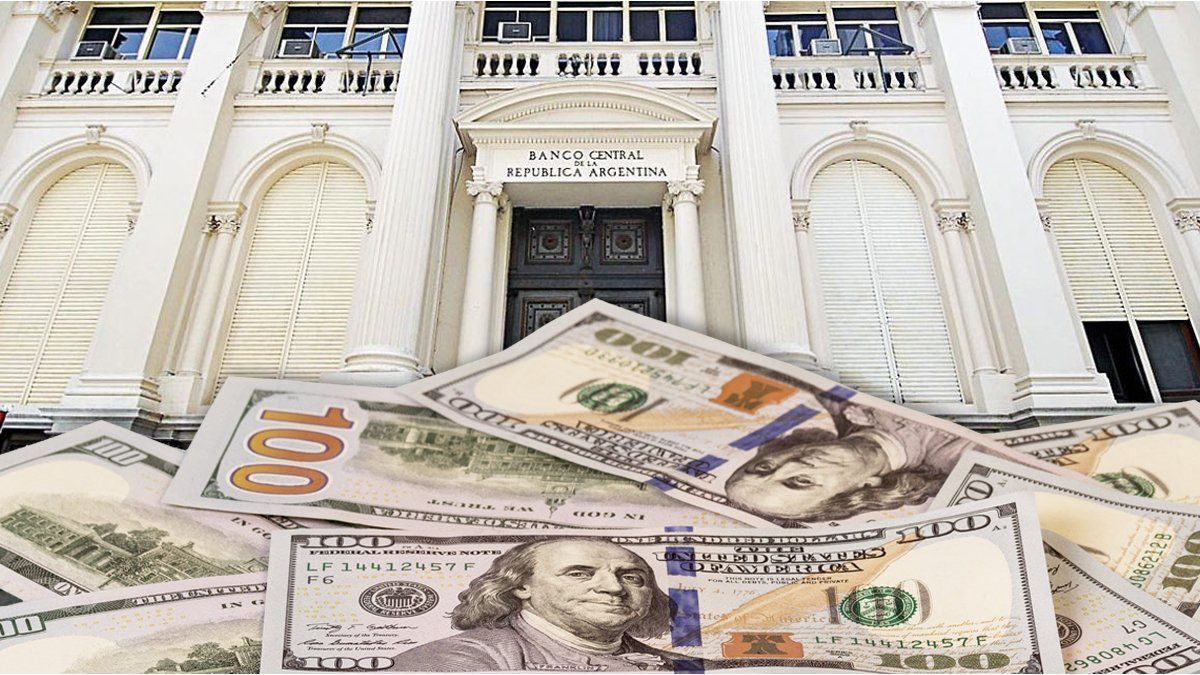In June, the central bank (BCRA) ended with a short position in the Single and Free Exchange Market (MULC), with a decrease of US$47 million. This result put an end to the streak of seven consecutive months of accumulation through this means and complicates the long-awaited exit from the restrictions, since the second semester is more complicated for the entry of dollars to the central bank and the variables are not the best.
As indicated in the latest report from the consulting firm Miguel KiguelEconviews, although the Government has time to think of different alternatives, write the (de)regulations and discuss the impacts on inflation, exchange rate and activity, “it should not take too long” to make the decision to end the restrictions. “This is not ideological, but practical,” he adds.
It happens that by not being able to accumulate reserves and with a gap that can go down somewhat, “but we don’t see it returning to 20%, the logical thing would be to leave“, Econviews states, which advances what would be the Government’s plan to add dollars to the Central Bank in the second half of the year: “The Government will wait to see if it can get some reserves to guarantee a minimum dirty float. Organizations, new program with the IMF, some repo with banks, return to the BIS, whatever is possible”.
“And if not, it will have to take the risk. Our view is that the risk is less than the Government and some in the market believe because the pesos of large corporations could not leave if the dividend channel is not opened. But we clearly understand the economic team’s caution. Being in the shoes of a consultant is not the same as being in the shoes of a policy maker,” concludes on this matter.
The Economist Fabio Rodriguez explains to Ambit that the advance budget sent by the Government in the last few hours already sheds some light on the debt in pesos and the task of refinancing it, “But nothing about the Achilles heel of the economic plan, which is how to accumulate reserves and how to deal with debt maturities starting in 2025.“.
For the economist, and ultimately, “The productive, the lack of reserves and the lack of coordination between inflation, devaluation and interest rate have no beginning of response in these first guidelines“, which translates into more doubts and uncertainty.
“The challenge for the government is that for the second half of the year it must accumulate reserves, reduce the country risk with credibility and agree with the IMF on a new program, otherwise it will have to restructure the debt and all the precarious stabilization it has achieved will collapse,” added Rodríguez.
Central Bank BCRA
Analysts agree that the difficulty shown by the BCRA to accumulate reserves has been deactivating the expectation that the crawl at 2% per month can be maintained.
Ignacio Petunchi
For his part, the economist Federico Glustein He adds in conversation with this medium that as things stand today “We are not in a position to say that the restrictions will be lifted.there is a decrease in liquidation due to various issues, but this would have to be regularized and funds would have to be received from abroad in order to be able to add reserves for possible attacks on the market.”
The analysts agree that the difficulty shown by the BCRA to accumulate reserves has been deactivating the expectation that the crawling peg can be maintained at 2% per month. Well, the officials themselves, who must informally understand that as long as reserves are accumulated, the daily rate of devaluation is maintained at 2% a few months ago, Today they maintain that this strategy continues even though this accumulation already disappeared in June.
June: the month that ended the BCRA’s streak
According to a report the latest report of Labour Capital & Growth (LCG) The slight increase in the BCRA reserves was due to the effects of the disbursement corresponding to the eighth review of the International Monetary Fund (IMF) program and to the balances in the minimum foreign currency cash account of the banks in the Central Bank, which totaled +588 million and +204 million, respectively“However, these increases were offset by the purchase of foreign currency that the Treasury made with the proceeds from the debt auctions, approximately US$255 million.”
LCG maintains that net reserves increased less than gross reserves because they do not consider the effect of the improvement in reserve requirements, which do count towards gross reserves. Despite the peak season for liquidations, ““There was no significant increase in the BCRA reserves,” he says.. Indeed, the pace of settlements, which had begun to slow down in May, turned negative in June and, in the first three days of July, did not show any significant change.
Factors explaining the lower inflow of reserves
LCG analyzes that among the factors that prevent the Central Bank from obtaining dollars are a greater flow of payments for imports due to the stipulated schedule, lower temperatures that increase energy demand, an export exchange rate that maintains a lagging dynamic, low rates that encourage borrowing to postpone settlements, and lower international prices.
“The external sector remains the Achilles heel of the economic program“, he says. And the Government itself anticipates that in the third quarter it will lose US$3 billion of the US$17 billion accumulated since taking office.
Given this situation, LCG states, “The exchange rate will likely need to be managed differently, possibly by speeding up the “crawl” or eliminating the dollar blend.which would imply a more erratic disinflationary dynamic than expected.
Alternatively, stricter controls on imports could be adopted to stem the drain, “although this would have consequences for prices and economic activity, even in a context of marked recession,” he concludes.
Source: Ambito
I am a 24-year-old writer and journalist who has been working in the news industry for the past two years. I write primarily about market news, so if you’re looking for insights into what’s going on in the stock market or economic indicators, you’ve come to the right place. I also dabble in writing articles on lifestyle trends and pop culture news.




